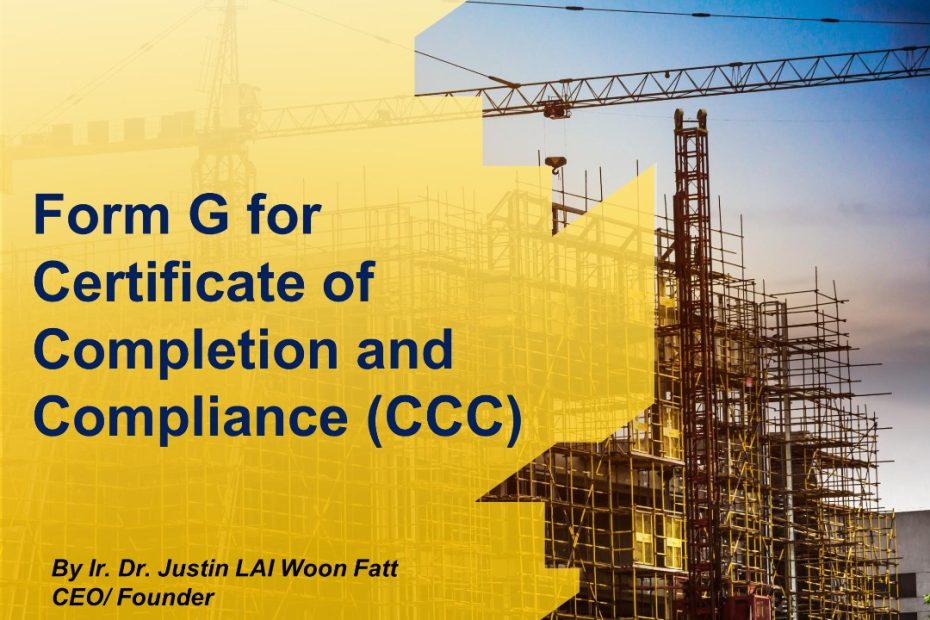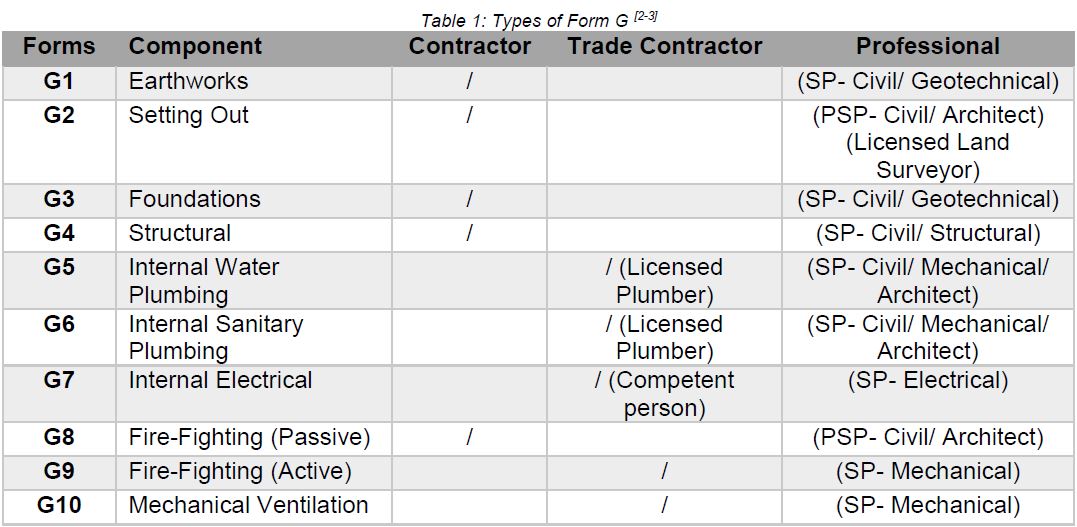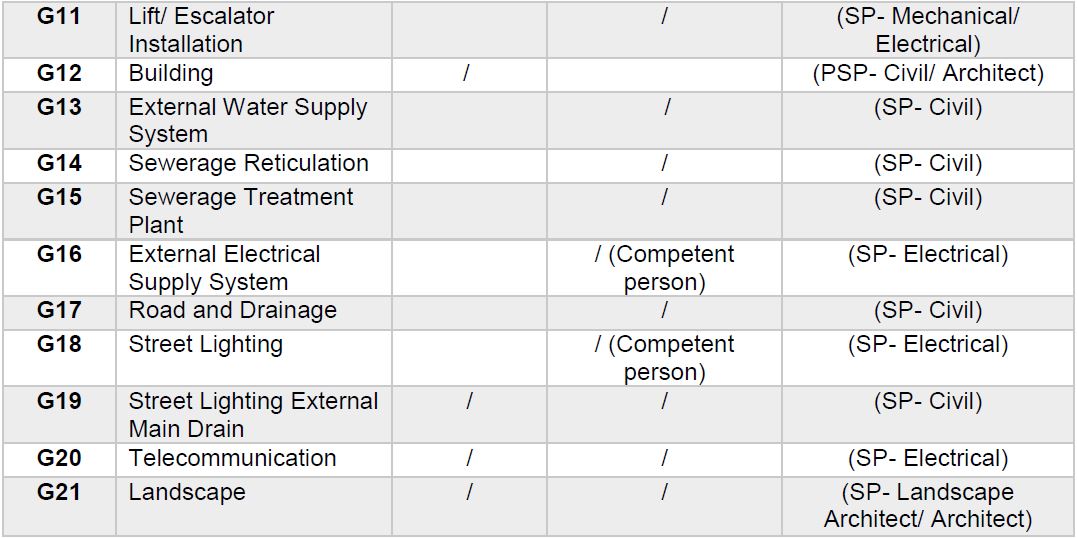Author: Ir. Dr. Justin LAI Woon Fatt | 31 December, 2022
INTRODUCTION
Certificate of Completion and Compliance (CCC) is a new system introduced by the Street, Drainage and Building (Amendment) Act 2007, enforced on 12th April 2007 to replace the Certificate of Fitness for Occupation (CFO) under the Uniform Building By-Laws of the Street, Drainage and Building Act 1974 (Act 133) [1]. The issuance of CCC indicates that the construction work has been completed and complied with the conditions and standards stipulated in the permit granted which is safe and fit to occupy.
The 21 Stage Certification Form or Form G is an essential part of the CCC. The duly-certified Form G is one of the conditions for CCC issuance by the Principal Submitting Person (PSP) such as Professional Engineers, Professional Architects, and building draftsmen who are registered with the respective professional boards and hold the Practicing Certificate. These forms are introduced under the stage certification process for 21 building components as set out in the Second Schedule of UBBL 2007.
TYPES OF FORM G
Form G comprises 21 forms (Form G1 to G21) that approve works across the 21 building components, from the start of earthwork to the final touch of landscaping. All the forms should be duly completed and certified before the issuance of CCC, along with the particular clearance letters. All Form G need to attach a certified copy of the company’s Form 49 to authenticate the contractor and a copy of the CIDB registration of the contractor company. If the contractor or trade contractor is the same in multiple Forms, then only one set of required documents is attached [3].
As shown below is the type of Form G to be used in accordance with the building components and the responsible parties involved in the stage certification process. SP or PSP must be a Professional Engineer with Practicing Certificate (PEPC).
According to the Second Schedule of UBBL 2007, some forms that need to be attached with confirmation/ supporting letters are G8, G9, G11, G13, G14, G15, G16, and G17 [2]. As for Form G17, the ‘deemed approve rule’ is applicable when the Submitting Person (SP) has submitted the official letter to request for the letter of confirmation, but no reply is received within 14 days after the date of application. In this case, the letter of confirmation is deemed to be given and it is unnecessary to attach the letter with Form G17 for the issuance of CCC. Some forms and their respective confirmation/ supporting letter from different agencies are summarised below:
SUBMISSION PROCESS OF FORM G
Each Form G shall only be signed upon completion and certification of the works by the Submitting Person (SP) or Principal Submitting Person (PSP). It is unethical and illegal to pre-sign a Form G when the work is not yet completed. It is encouraged to arrange, sign and keep Form G of its particular work once the work is completed instead of waiting until all works are completed as it might result in confusion or missing documents. However, in unforeseen situations such as the demise of the contractor, BEM will advise on a case-by-case basis providing that there is proof [4].
The process of submission of Form G can be divided into 3 stages. The first stage of submission is Stage 1 (substructure) which includes forms G1 to G3. The certification of Form G1 indicates that the construction and completion of earthwork are done in accordance with the approved earthwork plan. Form G2 (setting out) is to be signed by the contractor, PSP, and licensed land surveyor while Form G3 (foundation) is to be signed by the contractor and SP. PSP shall notify the Local Authority (LA) through OSC in writing or using the prescribed form after the certification of Form G1-G3.
Next, there are Stage 2 and 3 (superstructure and internal/ external services) which includes Form G4 to G21. PSP is responsible in supervising the construction work in Stages 2 and 3, and ensure that the Form G are duly signed and in order. There are a few websites where the Form G can be downloaded:
PSP shall deposit the certified copy of the Form G to the respective professional board and LA within 14 days after the issuance of CCC.
COMMON PROBLEM DURING FORM G SUBMISSION
One of the common problems during Form G submission is ineligible signature. A number of cases regarding the false signature on Form G have been uncovered. For instance, the contractor signs Form 9 (Fire-fighting Active) on behalf of the engineer who designed the system without acknowledgement, or get the form signed by a random registered professional engineer instead of getting signature from the original profesisonal engineer. In this case, the signature is adjudicated as illegal and the submission will be deemed deficient, thus it will be rejected. Also, there are problems such as signatures not signed at the correct place, ineligible supporting documents disclosed, missing signature from competent person, wrong date, etc. In short, PSP is responsible for making sure all the forms are properly signed and filled. PSP shall verify the validity of the signature and that the individual who provided the signature is authorized.
CONCLUSION
All in all, it is essential for PSP to ensure that all 21 stages of Form G certifications are duly completed and certified before the issuance of CCC. At the same time, PSP plays a vital role to ensure that all clearances are in place and technical works required by the LA are carried out. With that, PSP must deposit a copy of the CCC, together with all the Form G, to the LA and respective professional boards within 14 days after the issuance of the CCC. Knowing the fact that CCC is undeniably an important document for the property development process and the process of acquiring this certification is tedious, property owner should be extra careful when handling CCC and keep it properly.
Ir. Dr. Justin LAI Woon Fatt
CEO/ Founder
IPM Group
References:
[1] MPSP. (2007). Apakah Yang Dimaksudkan Dengan ‘Perakuan Siap Dan Pematuhan?”.
[2] Rehda Institude. (n.d.) Certificate of Completion and Compliance. Retrieved on 31st December 2022 from http://rehdainstitute.com/certificate-of-completion-and-compliance/
[3] BEM. (2021, July 7) Guide to Filling Up Form G1-G21. Retrieved on 31st December 2022 from http://bem.org.my/documents/20181/46927/Guide+to+Filling+Up+FORM+G1+-+G21+-+Website+200921.pdf/
[4] BEM. (n.d.) Frequently Asked Question. Professional Practice. Retrieved on 31st December 2022 from http://bem.org.my/documents/20181/38702/FAQ%28PPC_20.4.2017%29.pdf




